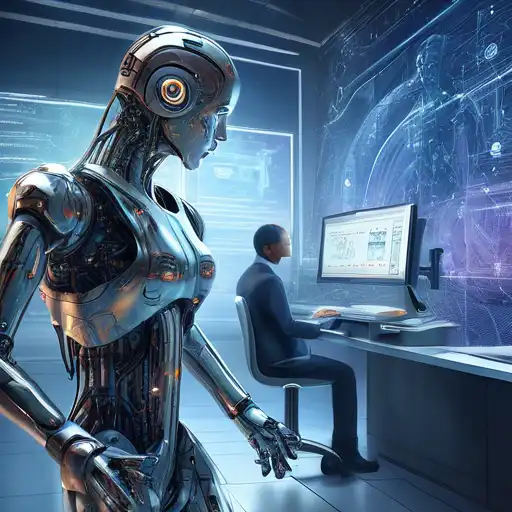Introduction to AI and Machine Learning
In the rapidly evolving world of technology, Artificial Intelligence (AI) and Machine Learning (ML) are two terms that often come up in discussions. While they are closely related, they are not the same thing. This article aims to demystify these concepts and highlight the key differences between them.
What is Artificial Intelligence?
Artificial Intelligence is a broad field of computer science focused on creating systems capable of performing tasks that typically require human intelligence. These tasks include problem-solving, recognizing speech, learning, planning, and understanding natural language. AI can be categorized into two types: narrow AI, which is designed to perform a narrow task (e.g., facial recognition), and general AI, which can perform any intellectual task that a human being can.
What is Machine Learning?
Machine Learning, on the other hand, is a subset of AI that involves the development of algorithms that allow computers to learn from and make decisions based on data. Instead of being explicitly programmed to perform a task, ML models use statistical methods to improve their performance over time as they are exposed to more data. ML is what powers many of the services we use today, from recommendation systems on streaming platforms to fraud detection in banking.
Key Differences Between AI and Machine Learning
While AI and ML are interconnected, there are several key differences that set them apart:
- Scope: AI has a broader scope, aiming to simulate human intelligence in machines, whereas ML focuses specifically on enabling machines to learn from data.
- Dependency: AI can function without ML by using rule-based systems, but ML relies on data and algorithms to learn and make decisions.
- Applications: AI applications range from robotics to natural language processing, while ML is more commonly used in data analysis, predictive modeling, and automated decision-making.
How AI and Machine Learning Work Together
Despite their differences, AI and ML often work hand in hand. ML algorithms are a key component of many AI systems, providing the ability to learn from data and improve over time. For example, an AI-powered chatbot may use ML to understand and respond to user queries more effectively as it interacts with more people.
Future Trends in AI and Machine Learning
The fields of AI and ML are continuously advancing, with new technologies and applications emerging regularly. Some of the most exciting trends include the development of more sophisticated neural networks, the increasing use of AI in healthcare, and the growth of autonomous vehicles. As these technologies evolve, the line between AI and ML may become even more blurred, but understanding their fundamental differences will remain crucial.
For those interested in diving deeper into these topics, exploring data science and tech trends can provide additional insights into how AI and ML are shaping the future.
Conclusion
AI and Machine Learning are transforming the way we live and work, offering unprecedented opportunities for innovation and efficiency. By understanding the distinctions between these two fields, individuals and businesses can better leverage their capabilities to solve complex problems and create value in an increasingly digital world.
